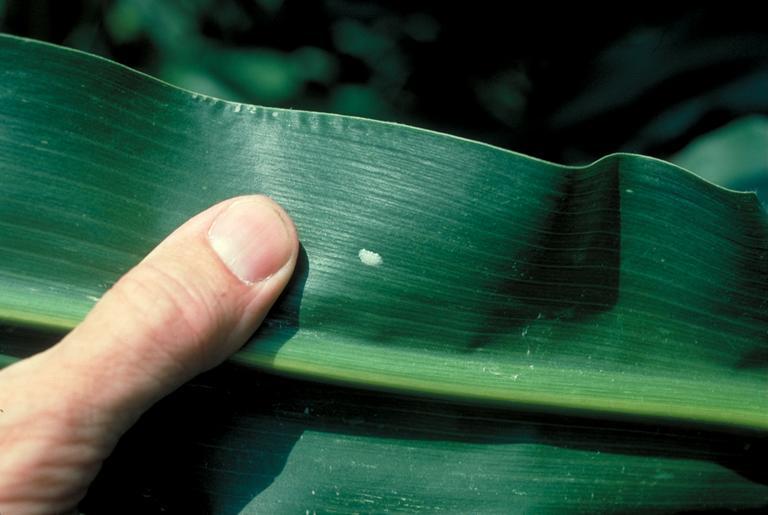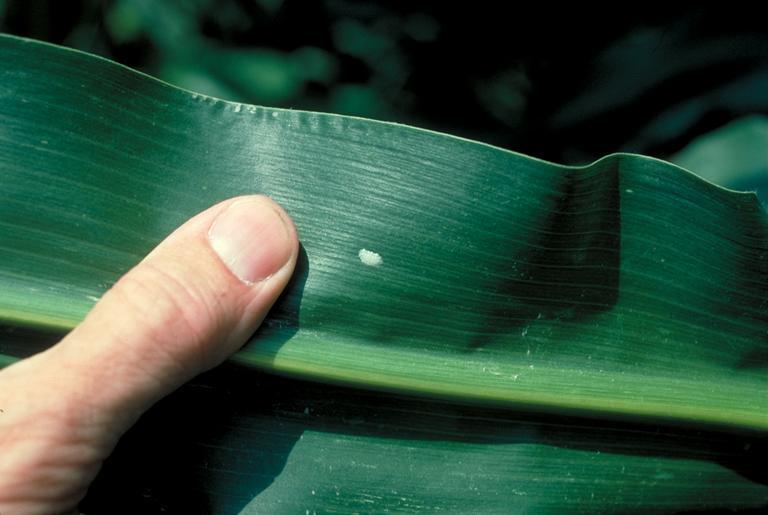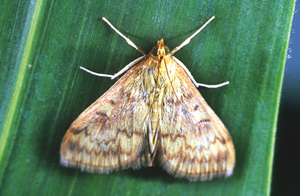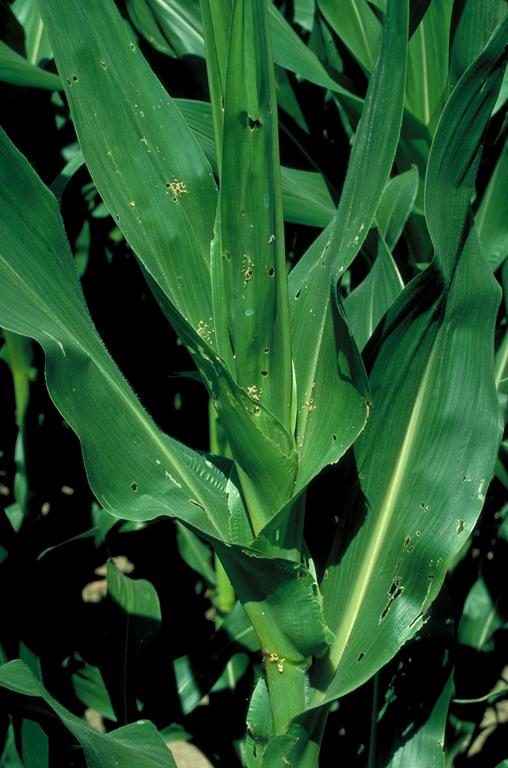I Spy Corn Borer – Keep Your Eyes Open This Year!

At one time, European Corn Borer (ECB) was one of the major insect pests for corn growers. Thankfully, many farmers in our region have not experienced significant losses to ECB, largely attributed to the high number of acres planted to Bt (Bacillus thuringiensis) traited corn.
Bt corn has been genetically altered to express protein from the Bacillus thuringiensis bacteria, which is poisonous to certain insects. In 1996, the first corn containing a Bt Cry protein was approved to help control ECB. This technology saw quick adoption by farmers, as the insect control was significantly better than chemical methods used in the past.
The initial launch of these traits required a 20% non-traited refuge planted in or near the field for Insect Resistance Management. This IRM requirement allowed for crossbreeding of surviving ECB moths to minimize the possibility of forming a resistance to Bt. As see in the apparent lack of ECB in recent memory, this strategy has been effective in preventing Bt resistance.
Monsanto received approval for their VT Double PRO RIB Complete corn trait in the fall of 2011. This trait allowed for IRM compliance using a blend of 95 percent Bt corn plus 5 percent non-Bt corn. VT2Pro corn contains two different proteins which together, eliminate the need for refuge acres. This ‘Refuge-in-a-Bag’ system helped farmers more easily manage ECB and, thus, it was quickly adopted.
Since then, the widespread use of Bt corn has greatly reduced the population of ECB in the northern plains. This sense of security, along with reduced commodity prices, has led many growers to return to conventional or non-Bt corn once again. While this does reduce input costs, farmers should be encouraged to increase other management techniques.
After being lulled into feeling ‘rid’ of ECB for many years, insect scouting is relevant once again! These pests can be very damaging to a corn field and cannot be overlooked. Much of the damage comes from tunneling in the stalk which leads to lodging or dropped ears before harvest.

European corn borer eggs are usually laid on the underside of a corn leaf. This egg cluster contains 38 eggs. Photo by: Iowa State University Entomology Dept.
Early planted corn should be scouted in June when the extended leaf height of the plant is 17-18 inches. Those same fields should continue to be scouted for the next five to six weeks. Be sure to examine feeding in the whorl leaves, active larvae and egg masses, and review your local economic thresholds for treatment: usually around 0.5 corn borer per plant.
Another way to judge when to start scouting is by using the Insect Degree Day method. This method uses the same formula as figuring Corn Growing Degree Days. When 1078 Degree Days have accumulated, 50 percent of the moths should be emerged. Currently, I am also testing a new electronic trap that measures what and how many insects are present and then relays that information to my phone, which makes early detection much easier.

This new Z-Trap technology reads the identity of an insect before sending a message to a farmer’s device.
While the scouting and risk of insect damage makes raising conventional corn a bit more complicated, the genetics for conventional hybrids are strong and their yields are comparable to traited products. Good herbicides are available to help control weeds, therefore adding diversity to weed management programs and minimizing weed resistance.
I always encourage growers to work with both their seed dealer and agronomist to make certain their corn is given the best chance for success. Scouting, proper planning, and being aware of new technologies will help to ensure that the acres planted to conventional corn will be protected from pests like ECB which have not been on our radar in recent years.





